RADIUM AGE 1Q2024
By:
March 31, 2024

Under the direction of HILOBROW’s Josh Glenn, in 2022 the MIT Press launched its RADIUM AGE series of proto-sf reissues from 1900–1935.
In these forgotten classics, sf readers will discover the origins of enduring tropes like robots (berserk or benevolent), tyrannical supermen, dystopias and apocalypses, sinister telepaths, and eco-catastrophes. With new contributions by historians, science journalists, and sf authors, the RADIUM AGE book series recontextualizes the breakthroughs and biases of these proto-sf pioneers, and charts the emergence of a burgeoning literary genre.
RADIUM AGE SERIES UPDATES: 2022 | 2023 | 2024 | 1Q2025 | 2Q2025. FULL SERIES INFO.
Below, please find updates on the RADIUM AGE project from 1Q2024.
During 1Q2024, the RADIUM AGE series published the following titles.
A SELECTION OF BENGALI SCIENCE FICTION
Edited & and Translated by BODHISATTVA CHATTOPADHYAY
(March 12, 2024)
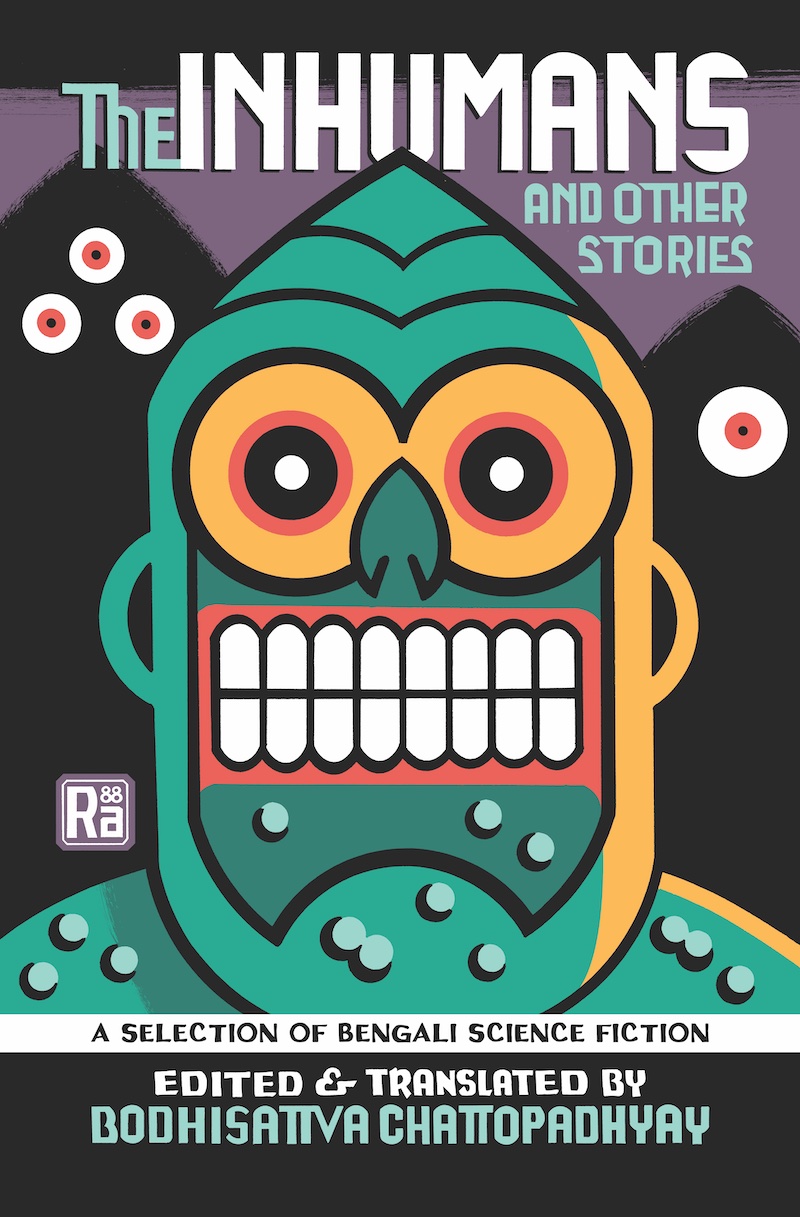
The first English translation of a cult science fiction favorite by Hemendrakumar Roy, one of the giants of early Bangla literature, and other sf stories from the colonial period in India.
Kalpavigyan — science fiction written to excite Bengali speakers about science, as well as to persuade them to evolve beyond the limitations of religion, caste, and class — became popular in the early years of the twentieth century. Translated into English for the first time, in this collection you’ll discover The Inhumans (1935), Hemendrakumar Roy’s satirical novella about a lost race of Bengali supermen in Uganda. Also included are Jagadananda Ray’s “Voyage to Venus” (1895), Nanigopal Majumdar’s “The Mystery of the Giant” (1931), and Manoranjan Bhattacharya’s “The Martian Purana” (1931).
“The Inhumans represented a genuine moment of science fiction’s arrival in interwar Bengal — a region caught up in the brutality of imperial backlash against accelerating waves of enlightened self-determination.” — Anindita Banerjee, author of Science Fiction Circuits of the South and East
“This anthology of Bengali science fiction captures the timelessness of human speculation. The stories explore and interrogate many of the same questions we have today, and Chattopadhyay’s translation perfectly evokes the language of the Radium Era.” — S. B. Divya, Hugo- and Nebula-nominated author of Machinehood
Press for The Inhumans includes the following…
“Offers a valuable peek into genre history.” — Publishers Weekly
“A welcome expansion of speculative fiction for anglophone readers.” — Words Without Borders
“Makes for a great introduction to this moment in SF history.” — Reactor (formerly Tor.com)
“Contains a number of stories never before published in English, and it looks like a fascinating read.” — Transfer Orbit
“Chattopadhyay’s collection will add to [Bengali science fiction] canon in English and is sure to appeal to fans of sci-fi and general readers alike. — Kajal Magazine
BC was interviewed about the collection by Clarkesworld. Excerpt: “I think what might surprise readers of the book is how closely connected SF literary cultures were in the early twentieth century. While the works have distinct Bengali characteristics, as well as Indian mythological references, influences from Anglophone SF, and Anglophone adventure literature are omnipresent.”
BC was interviewed about the collection by Paul Semel. Excerpt: “You will get a unique glimpse into colonial-era science fiction written from the other side of the colonial exchange, written from a different perspective and style, which are nonetheless riveting adventure stories.”
BC was interviewed about the collection by Miranda Melcher for her New Books Network podcast. Excerpt: “I am interested in how much contemporary science fiction I can see in these works. That’s really special — and it’s part of the logic of this whole series. Because there is no genre ‘science fiction’ yet, one finds [in proto-sf stories] a mixture of genres: fantasy, horror, detective fiction, children’s adventures….”
BODHISATTVA CHATTOPADHYAY is Associate Professor in Global Culture Studies at the University of Oslo. He is the leader of CoFUTURES, an international research group on contemporary futurisms headquartered in Oslo. He is a World Fantasy Award-winning editor, translatorm writer, and critic of speculative fiction, and the producer of Kalpavigyan: A Speculative Journey, the first documentary on Indian science fiction.
MANORANJAN BHATTACHARYA (1903–1939) was a fiction writer, translator, and editor who contributed extensively to children’s and young adult literature. He is particularly known for editing the magazine Ramdhanu, which served as one of the main periodicals via which Bangla SF took shape.
NANIGOPAL MAJUMDAR (1897–1938) was an Indian archaeologist and Sanskrit scholar. Known among archaeologists as NGM, he is credited with having discovered numerous Indus Valley Civilization sites.
JAGADANANDA RAY (1869–1933) was a Bengali science writer and author. His story “Voyage to Venus” (1895) was one of the earliest scientific romance stories written in Bangla.
HEMENDRAKUMAR ROY (1888–1963) is a founding figure for Bangla sf as a writer, editor, and translator. “Hemen Roy” also wrote social realist fiction and non-sf genre fiction, not to mention essays on Bengali culture, popular science, and art. Via sf, he popularized scientific and technological breakthroughs and promoted an anti-colonial vision… while criticizing the excesses of nationalist chauvinism. Roy continues to be one of the most widely read figures in Bangla literature.
Cover designed by Seth. See this book at The MIT Press.
CHARLOTTE HALDANE
Introduction by PHILIPPA LEVINE
(March 12, 2024)
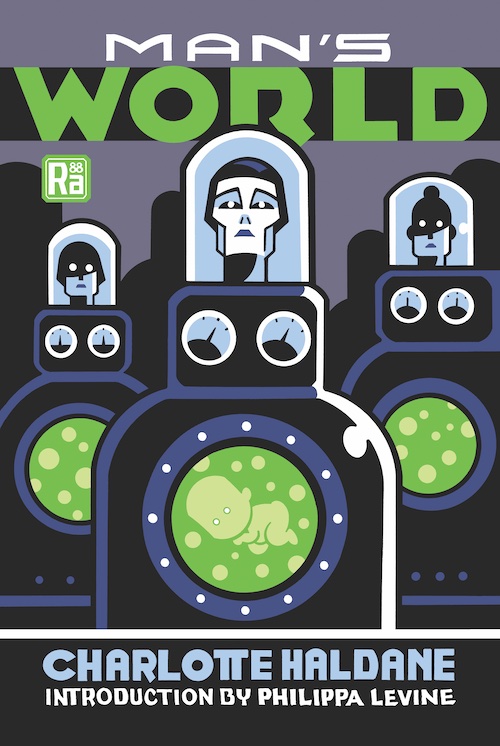
In a eugenics-driven future society, will one young woman’s defiance make a difference?
In the not-too-distant future, England’s population quality and quantity are under scientific control: Only those deemed the fittest are permitted to procreate. Women are either groomed to be “vocational mothers,” or sterilized and put to other uses. Written by an author married to one of the world’s most prominent eugenics advocates, this ambivalent adventure anticipates both Brave New World and The Handmaid’s Tale. When a young woman rebels against her conditioning, can she break free?
“A volatile admixture of feminist revelations with racially biased eugenic theorizing, nearly a century after its first publication Man’s World offers unique insight into its historical moment — and our own.” — Alexandra Minna Stern, Dean of Humanities, and Professor of English, History, and in the Institute for Society and Genetics at the University of California, Los Angeles; and founder and co-director of the Sterilization and Social Justice Lab.
Press for Man’s World includes the following…
“Haunting, complex, profound, and relevant, Man’s World is a compelling novel that forwards intriguing commentary on questions of gender, race, and social order.” — Foreword
“[Haldane’s] tale of a futuristic society haunted by eugenics remains deeply relevant nearly a century after it was first published.” — Reactor (formerly Tor.com)
CHARLOTTE HALDANE (1894–1969) was a journalist who advocated for divorce reform and married women’s employment… while also idealizing motherhood. In 1926, the year that Man’s World was published, she married the eminent biologist J.B.S. Haldane. Her 1927 book, Motherhood and Its Enemies, made a progressive argument for easier access to contraceptives for women… while enraging feminists by arguing that only after having borne children could a woman be regarded as “normal.” She went on to found the Science News Service, and reported on WWII from the Russian Front.
PHILIPPA LEVINE is Walter Prescott Webb Chair in History and Ideas, and Director of British, Irish and Empire Studies at the University of Texas at Austin. She is the author of, among other books, Eugenics: A Very Short Introduction (2017), The British Empire: Sunrise to Sunset (3d edition, 2019), and the forthcoming The Tree of Knowledge: Science, Art and the Naked Form. With Alison Bashford, she is co-editor of The Oxford Handbook of the History of Eugenics (2010).
Cover designed by Seth. See this book at The MIT Press.
PS: HILOBROW will serialize Man’s World beginning this summer.
During 1Q2024, Josh worked with the MITP editorial team to proof the series’ two Fall 2024 titles — Francis Stevens’s The Heads of Cerberus and Other Stories and Edward Shanks’s The People of the Ruins, finalize their covers, and send them to press. Four 2025 titles, including a translation (from Russian) of Marietta Shaginyan’s Mess–Mend, J.D. Beresford’s The Hampdenshire Wonder, John Taine’s The Greatest Adventure, and a collection of superhuman-themed story and novel excerpts, are well underway. And four proposed titles for 2026 have been submitted for the consideration of the MIT Press’s editorial board.
Also…
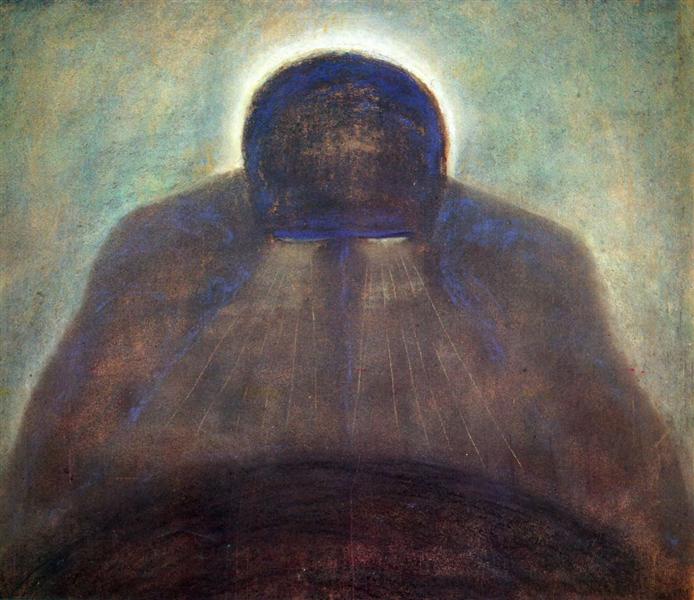
Here at HILOBROW, Josh has continued to share his Radium Age-related research. For example, via the series RADIUM AGE POETRY and RADIUM AGE ART, he’s shared proto-sf-adjacent poems and art works from the years 1900–1935.
Here’s the 1Q2024 RADIUM AGE ART lineup:
1900 | 1901 | 1902 | 1903 | 1904 | 1905 | 1906 | 1907 | 1908.
And here’s a sampling of the 1Q2024 RADIUM AGE POETRY lineup:
William Stanley Braithwaite’s DEL CASCAR | F.V. Brandford’s THE MOON | Michael Roberts’ PERSPECTIVE | William Empson’s LETTER I | Amy Lowell’s MIDDAY AND AFTERNOON | Wallace Stevens’s FABLIAU OF FLORIDA | and others.
To see the full RADIUM AGE POETRY lineup, visit this page.
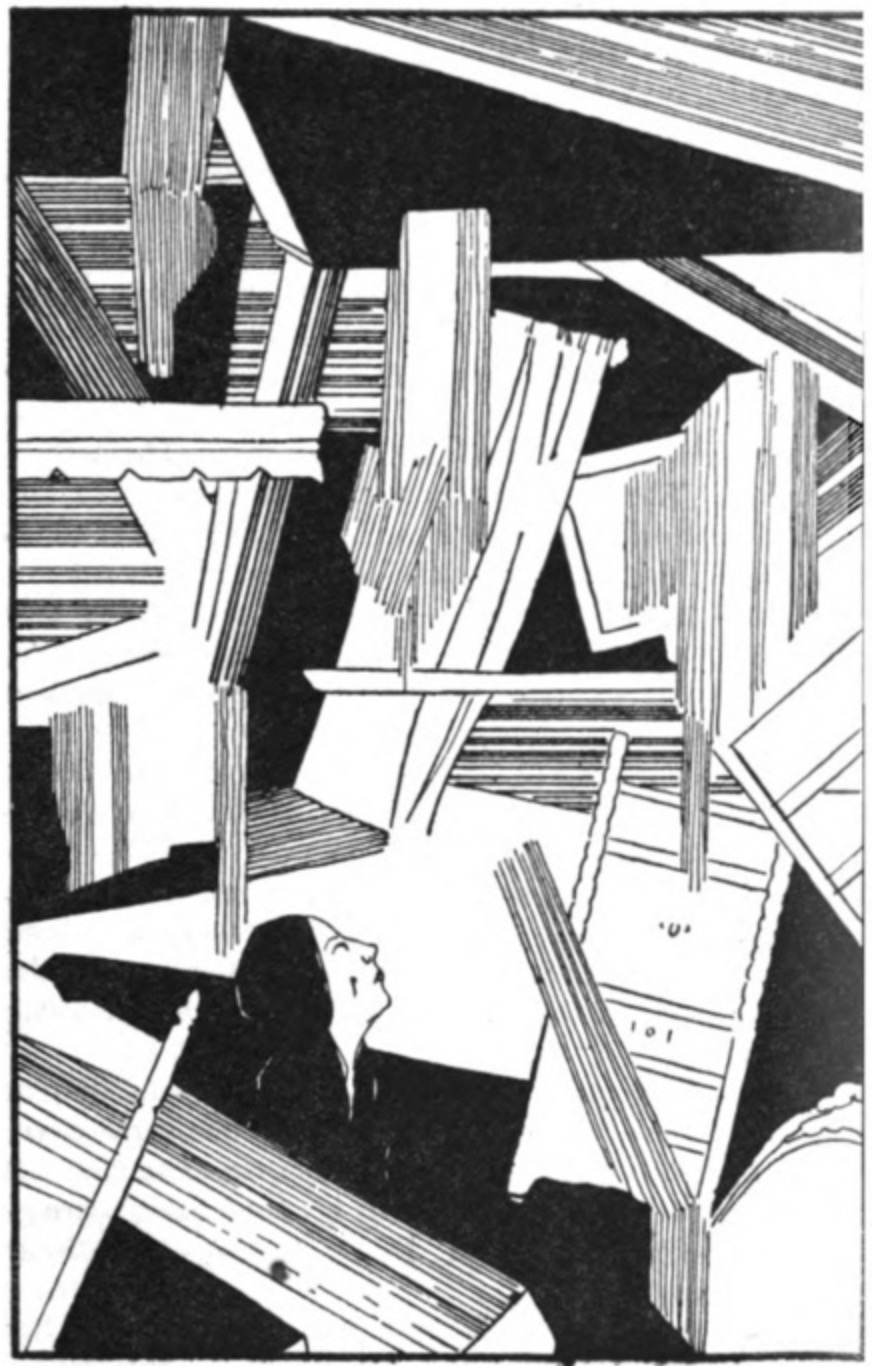
Here at HILOBROW, as we have been doing for a decade now, during 1Q2024 we serialized some of Josh’s favorite Radium Age proto-sf stories and novels. Here’s the lineup:
- May Sinclair’s “Where Their Fire is Not Quenched” (1922)
- Harriet Prescott Spofford’s “The Ray of Displacement” (1903)
- Van Tassel Sutphen’s The Doomsman (1905–1906)
- Rudyard Kipling’s “Unprofessional” (1930)
- Irene Clyde’s Beatrice the Sixteenth (1909)
Here’s what they’re saying about the series:
“Joshua Glenn’s admirable Radium Age series [is] devoted to early- 20th-century science fiction and fantasy.” — Michael Dirda, Washington Post | “Neglected classics of early 20th-century sci-fi in spiffily designed paperback editions.” — The Financial Times | “New editions of a host of under-discussed classics of the genre.” — Tor.com | “The best proto-science fiction novels and stories from 1900 to 1935.” — The Washington Post. | “Long live the Radium Age.” — Scott Bradfield, Los Angeles Times | “Shows that ‘proto-sf’ was being published much more widely, alongside other kinds of fiction, in a world before it emerged as a genre and became ghettoised.” — BSFA Review. | “A huge effort to help define a new era of science fiction.” — Transfer Orbit | “It’s an attractive crusade. […] Glenn’s project is well suited to providing an organizing principle for an SF reprint line, to the point where I’m a little surprised that I can’t think of other similarly high-profile examples of reprint-as-critical-advocacy. ” — The Los Angeles Review of Books | “An excellent start at showcasing the strange wonders offered by the Radium Age.” — Maximum Shelf
During 1Q2024, the series received some nice publicity. Here’s a sampling:
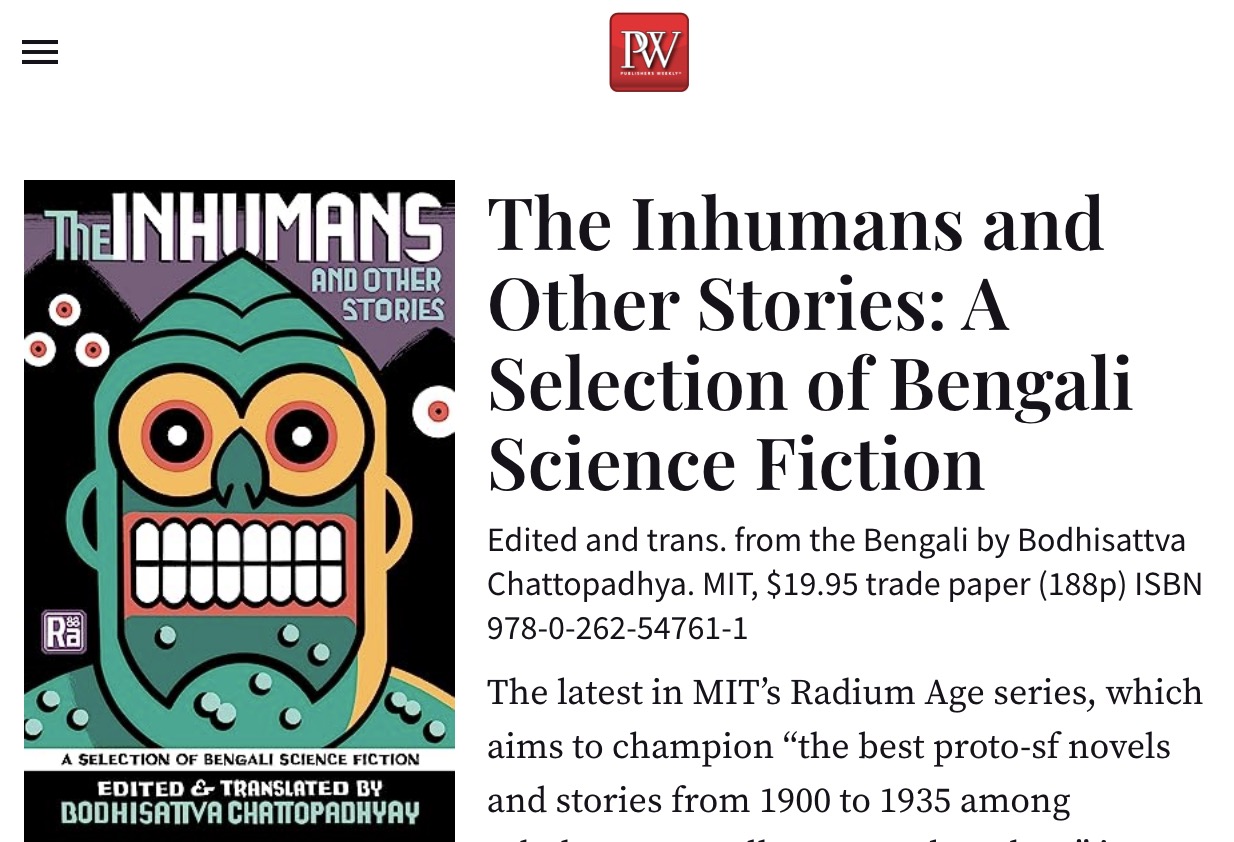
- Publishers Weekly reviewed The Inhumans: “A valuable peek into genre history.”
- Foreword reviewed Man’s World: “Haunting, complex, profound, and relevant, Man’s World is a compelling novel that forwards intriguing commentary on questions of gender, race, and social order.”
- Tobias Carroll of Words Without Borders reviewed The Inhumans: “Includes the first-ever English translation of Hemendra Kumar Roy’s title story, along with several other works of Bangla speculative fiction from the first half of the twentieth century (and, in one case, even earlier) — all of which should make for a welcome expansion of speculative fiction for anglophone readers.”
- Reactor (formerly Tor.com) included The Inhumans in its round-up of “Can’t Miss Indie Press Speculative Fiction for March and April 2024.” Excerpt: “How’s your knowledge of Bengali science fiction from the first half of the 20th century? If your answer to that is, ‘Not comprehensive, unfortunately,’ don’t worry; editor and translator Bodhisattva Chattopadhyay is behind a new collection that makes for a great introduction to this moment in SF history. The centerpiece of The Inhumans and Other Stories: A Selection of Bengali Science Fiction is the title novella by Hemendrakumar Roy — but there’s more to be found within these covers, including voyages across the solar system.”
- Reactor also included Man’s World in the same round-up. Excerpt: “The biography of Charlotte Haldane — anti-fascist journalist, cohort of Paul Robeson, and feminist activist — would make for a fascinating read on its own. That shouldn’t minimize her fiction, however: her 1926 novel Man’s World is getting a new edition in March, and its tale of a futuristic society haunted by eugenics remains deeply relevant nearly a century after it was first published.”
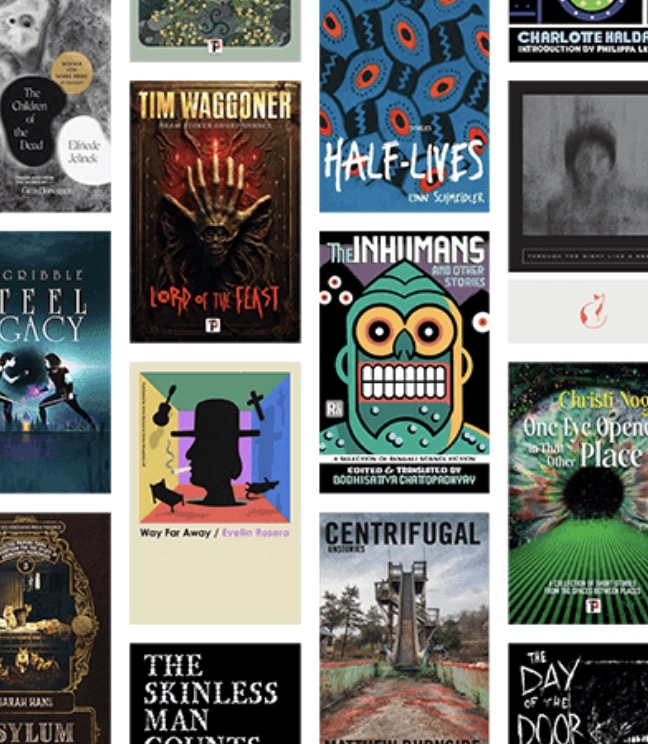
MORE RADIUM AGE SCI FI ON HILOBROW: RADIUM AGE SERIES from THE MIT PRESS: In-depth info on each book in the series; a sneak peek at what’s coming in the months ahead; the secret identity of the series’ advisory panel; and more. | RADIUM AGE: TIMELINE: Notes on proto-sf publications and related events from 1900–1935. | RADIUM AGE POETRY: Proto-sf and science-related poetry from 1900–1935. | RADIUM AGE 100: A list (now somewhat outdated) of Josh’s 100 favorite proto-sf novels from the genre’s emergent Radium Age | SISTERS OF THE RADIUM AGE: A resource compiled by Lisa Yaszek.
